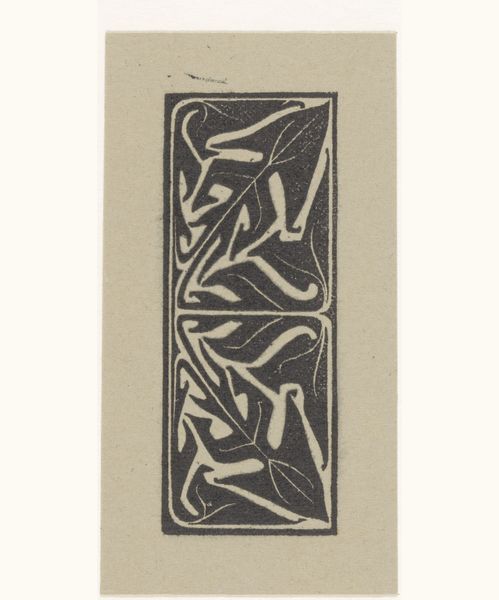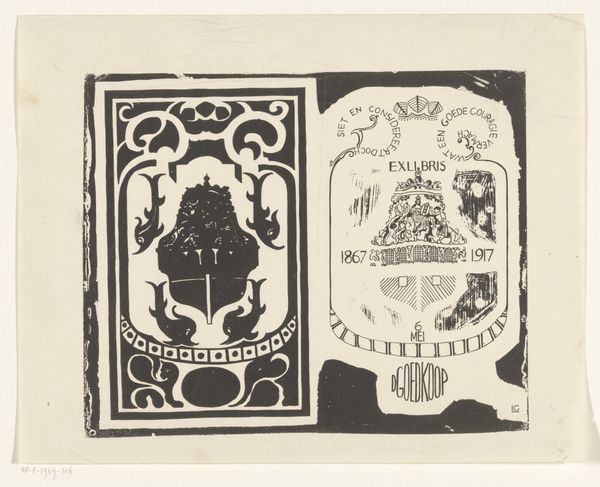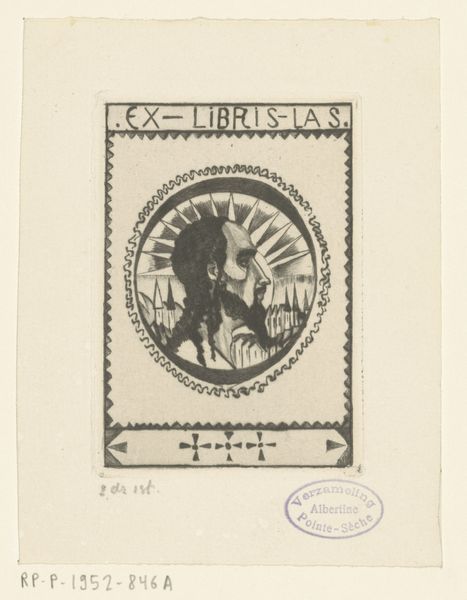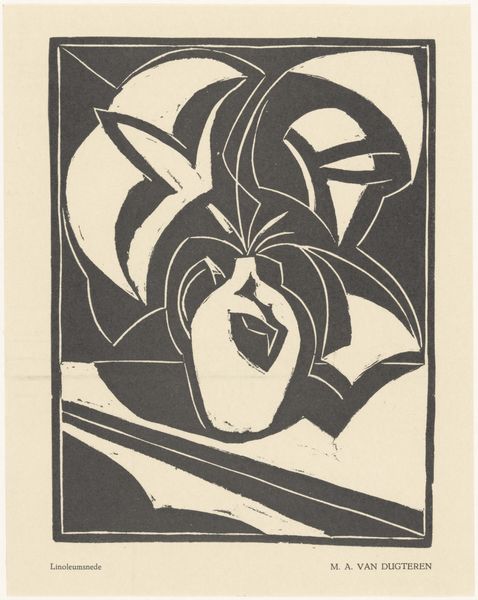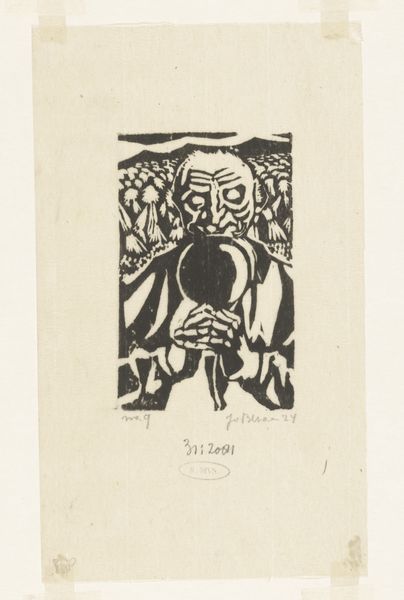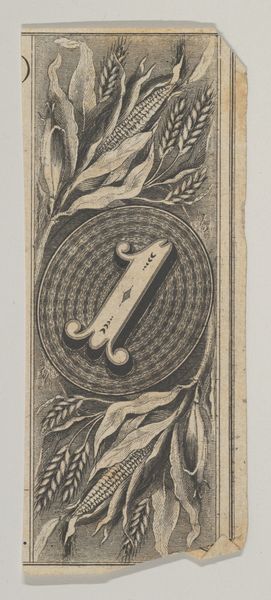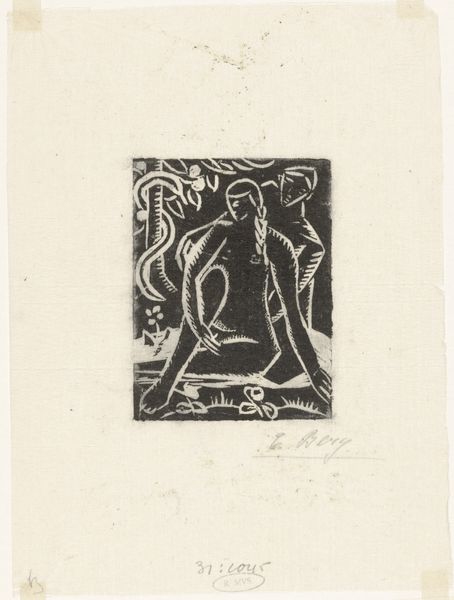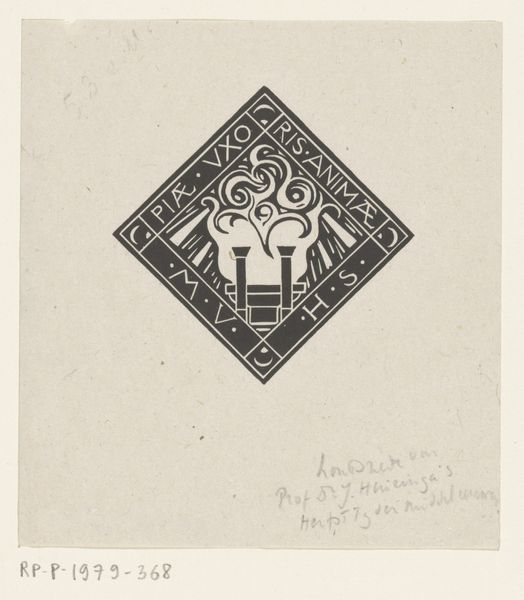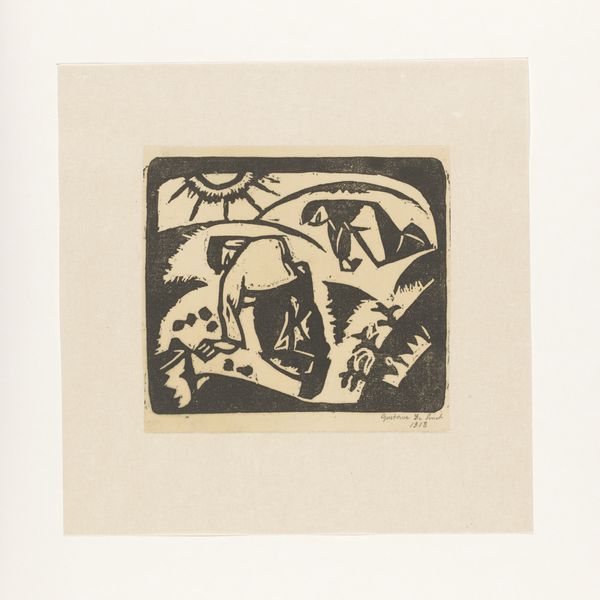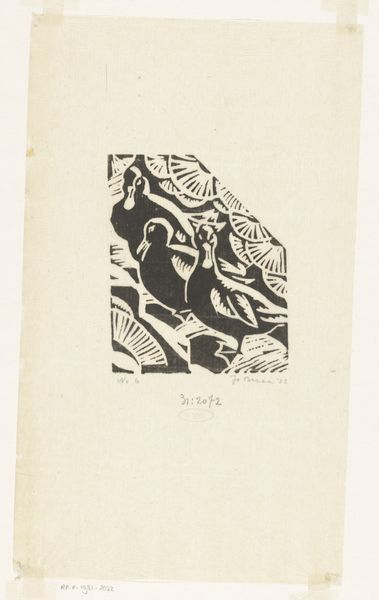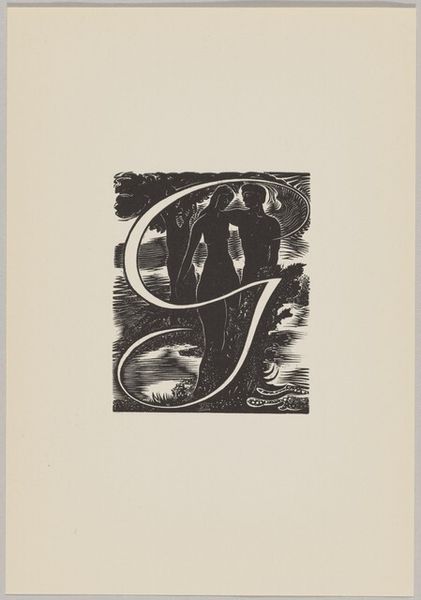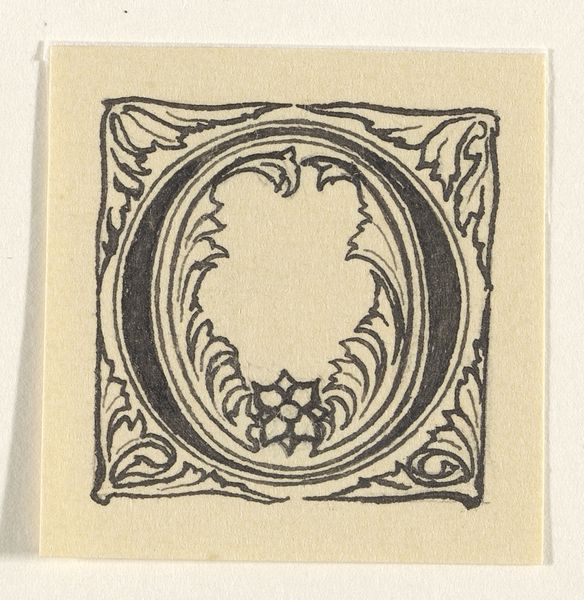
Dimensions: height 154 mm, width 89 mm
Copyright: Rijks Museum: Open Domain
Editor: This is a woodcut print titled "Paaskaart van Philip van Praag voor 1938," made in 1938 by Philip van Praag. It feels almost like a logo with some dark symbolism going on. What do you see in it? Curator: Well, considering it was made in 1938, I see a strong social commentary rooted in the materials and production itself. Look at the stark contrast of the woodcut – the harsh blacks and whites. This isn't delicate etching; it's a bold, almost confrontational medium. This points to the anxieties of the time. The very act of carving wood is labor-intensive. Editor: You're saying the *way* it's made matters more than the image itself? Curator: It all matters! The means of production reflect the maker's and consumer's class. This wasn't mass-produced lithography meant for the masses; woodcuts involve a particular skill and time investment, thus, reaching a select audience. Who was Van Praag targeting with his message? The imagery —dove, flower, and promise of giving happiness —contrasts with the medium's severity, creating tension. Editor: So the *craft* aspect gives it deeper meaning? The labor is part of the art? Curator: Exactly. It forces us to think about the artist’s intentions, his resources, his social positioning. Where did he get the wood? Who was the intended recipient of the card, and what was the message of “giving, luck and peace in life” intended to do in the context of rising tension? Editor: That really reframes how I see this print. I was just looking at the symbolism, but the materiality makes the message a lot more complex. Curator: Right. Analyzing the medium, its production, distribution, and consumption offers invaluable insights. Editor: Thanks! I’ll definitely be looking at materials with fresh eyes now.
Comments
No comments
Be the first to comment and join the conversation on the ultimate creative platform.
